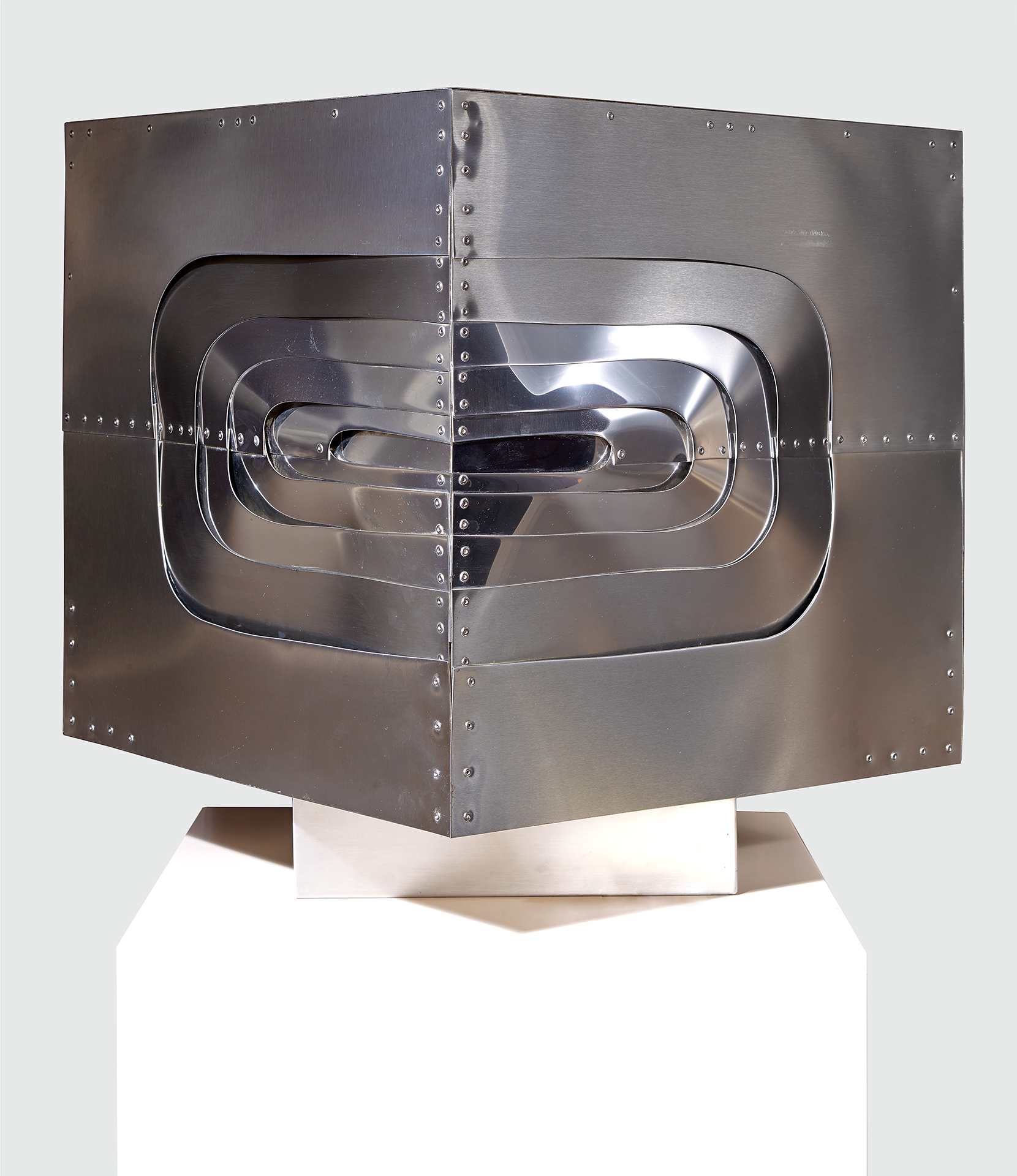
Amadeo Gabino (Valencia, 1922 – Madrid, 2004)
Apolo 22
1974
WORK INFORMATION
Stainless steel, 50 x 50 x 50 cm
OTHER INFORMATION
Signed and dated in the bottom corner: "Amadeo Gabino AG-1974"
A sculptor and son of a sculptor, Amadeo Gabino studied at the San Carlos School of Fine Arts in Valencia and later, between 1948 and 1959, continued his education in Rome (Spanish Academy of Fine Arts), Paris (École des Beaux-Arts and École du Louvre), Hamburg (Staatliche Hochschule für Bildende Kunst) and New York (thanks to a grant from the Ford Foundation). After seeing the work of Arturo Martini and Mario Marini in Italy and experiencing contemporary art at first-hand in Paris, Gabino began to create bronze female sculptures characterised by an obvious need for synthesis, whose power was concentrated in a single point: their painted eyes. In 1957 his career took a significant turn when he began using iron. His sculptures from that period reflect Constructivist notions and consist of spindly rods or bars assembled in strongly vertical arrangements. These works, which appear to link the artist to the pioneering experiments with assemblage of Julio González and Picasso, have nothing in common with his output in the following stage of his career, the one that would define his personal style.
In the mid-1960s Gabino devised a technique that consisted in overlapping circular metal plates in a concentric pattern. He initially worked with iron and steel, but he soon switched to lighter, more malleable materials, especially aluminium and brass. The artist applied this method to one form in particular, the cube, of which the monumental columns entitled Estelas [Stelae] that he produced after this point were mere derivatives. Like the figurative sculptures of his early days, these cubes draw the spectator's attention to one or several specific points: the places where the circular plates overlap. The sculptures of this phase, which lasted approximately up until the 1990s, were characterised by an ongoing analysis of the different possibilities offered by a single form, as mentioned above, and by Gabino's efforts to reveal the interior from the exterior. The need to emphasise a specific point tending towards the interior of the structure ultimately poses symbolic questions: it is a form of inquiry into the intimate, what lies beneath the surface, what remains hidden versus what is visible. The artist produced these types of works in series, such as the iron cubes of Marte [Mars] or the stainless steel cubes of Apolo [Apollo], the series to which the piece in the Banco Santander Collection pertains.
Although Gabino was an artist whose practice was essentially devoted to sculpture, it is also important to point out his interest in graphic work, his collaboration with contemporary architects and his efforts in the field of object design. [Inés Vallejo]

